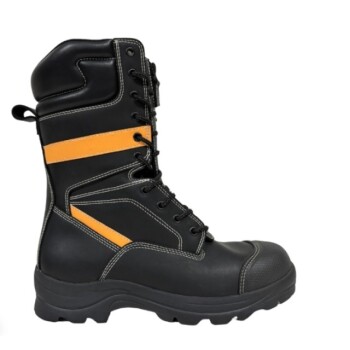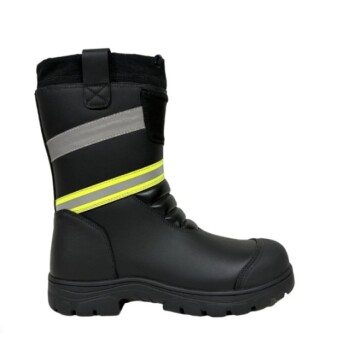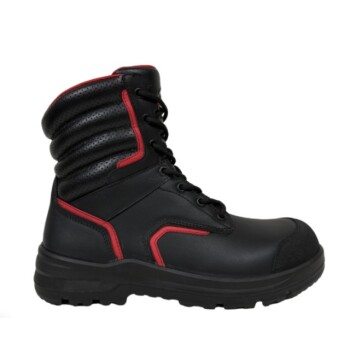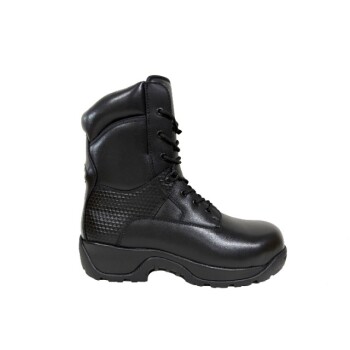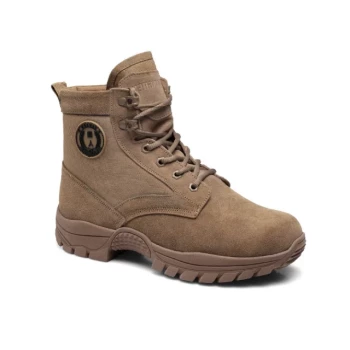At its core, the distinction is one of purpose. A snow boot is a piece of specialized equipment designed for deep snow and harsh winter conditions, prioritizing total waterproofing and aggressive traction. A winter boot is a more versatile, everyday option for general cold and light precipitation, balancing warmth and style for less extreme environments like city streets.
The fundamental difference is not about warmth but about water. A true snow boot is engineered to keep your feet dry when submerged in snow and slush, while a winter boot is designed to keep you warm during daily activities where you are not expected to face deep, wet conditions.

Deconstructing the Key Differences
To select the right boot, you must understand how their construction serves different functions. Each design element represents a choice that favors either extreme protection or everyday versatility.
Waterproofing vs. Water Resistance
A snow boot is built to be fully waterproof. It often uses a rubber shell and sealed seams to create an impenetrable barrier against deep snow, slush, and puddles.
A winter boot is typically water-resistant. It can handle light snow and damp sidewalks, but it is not designed to be submerged and will likely leak under heavy, wet conditions.
Traction and Outsole Design
The outsole of a snow boot features deep, aggressive lugs. This design is engineered to bite into packed snow and provide superior grip on icy, uneven surfaces.
Winter boots have more moderate tread. Their outsoles provide significantly more traction than a regular shoe but are optimized for cleared pavement or light dustings of snow.
Insulation and Warmth
Both boot types are insulated, but snow boots often have higher insulation ratings for prolonged, static exposure to extreme cold, such as during winter sports or work.
Winter boots focus on providing enough warmth for shorter durations, like a daily commute or running errands, without causing your feet to overheat once you are indoors.
Height and Ankle Support
To prevent snow from entering from the top, snow boots are almost always taller, extending well above the ankle. This height also provides crucial ankle support on unstable terrain.
Winter boots come in various heights, but many are shorter, ankle-boot styles. This offers greater flexibility and makes them easier to pair with different outfits.
The Purpose-Driven Divide: Function vs. Versatility
The most significant distinction is not in a single feature, but in the overall design philosophy. One is a specialized tool; the other is a daily driver.
The Snow Boot: A Specialized Tool
Think of a snow boot as you would a snow tire. It is designed for maximum performance in a specific, challenging environment. Its primary role is to provide uncompromising protection, warmth, and safety during activities like shoveling heavy snow, winter hiking, or outdoor play.
Fashion and indoor comfort are secondary concerns. The materials are chosen for durability and how easily they shed snow and mud.
The Winter Boot: The Everyday Performer
A winter boot is more like an all-season tire. It is built to handle a variety of common winter conditions competently, from a cold, dry morning to a light snowfall in the afternoon.
It blends functional elements like insulation and moderate traction with stylistic considerations. This makes it the ideal choice for commuting, socializing, and general wear in urban or suburban settings where paths are typically maintained.
Understanding the Trade-offs
Choosing one type of boot means accepting the limitations inherent in its design. There is no single boot that excels in every scenario.
The Burden of Protection (Snow Boots)
While unmatched in harsh weather, snow boots are often heavier and bulkier. This can make them clumsy for driving or walking long distances on clear pavement.
Their robust waterproofing can also lead to less breathability, potentially causing feet to sweat if worn indoors for extended periods.
The Limits of Versatility (Winter Boots)
A winter boot's primary weakness is its performance in severe conditions. In deep snow or heavy slush, its lower height and water-resistant (not waterproof) construction can quickly lead to cold, wet feet.
The less aggressive tread provides insufficient grip on truly icy or unpacked surfaces, increasing the risk of slips and falls.
Making the Right Choice for Your Conditions
To choose correctly, you must evaluate the reality of your winter environment and activities, not just the daily temperature.
- If your primary focus is navigating deep snow, slush, and icy terrain for activities like shoveling or winter hiking: Choose a dedicated snow boot for its superior waterproofing and aggressive traction.
- If your primary focus is daily commuting in a cold city with regularly cleared sidewalks: A winter boot offers the ideal balance of warmth, style, and moderate weather resistance.
- If your primary focus is a versatile boot for a mix of town and country with unpredictable conditions: Consider a taller, more rugged winter boot with a high rating for water resistance as a capable compromise.
Ultimately, choosing the right boot means honestly assessing your environment and prioritizing the features that will serve you best day after day.
Summary Table:
| Feature | Snow Boots | Winter Boots |
|---|---|---|
| Primary Use | Deep snow, harsh conditions, outdoor work/play | Everyday wear, city streets, light precipitation |
| Waterproofing | Fully waterproof (rubber shell, sealed seams) | Water-resistant (handles light snow/dampness) |
| Traction | Deep, aggressive lugs for ice and packed snow | Moderate tread for cleared pavement |
| Height & Support | Tall, above ankle for support and snow entry prevention | Varies, often shorter for flexibility and style |
| Best For | Shoveling, winter hiking, prolonged exposure to wet/cold | Commuting, errands, general cold-weather wear |
Need High-Quality Winter or Snow Boots for Your Business?
As a large-scale manufacturer, 3515 produces a comprehensive range of durable and functional footwear for distributors, brand owners, and bulk clients. Whether you need specialized snow boots with superior waterproofing and traction or versatile winter boots that balance warmth and style, our production capabilities encompass all types of shoes and boots to meet your market's demands.
Contact us today to discuss your requirements and get a quote!
Visual Guide
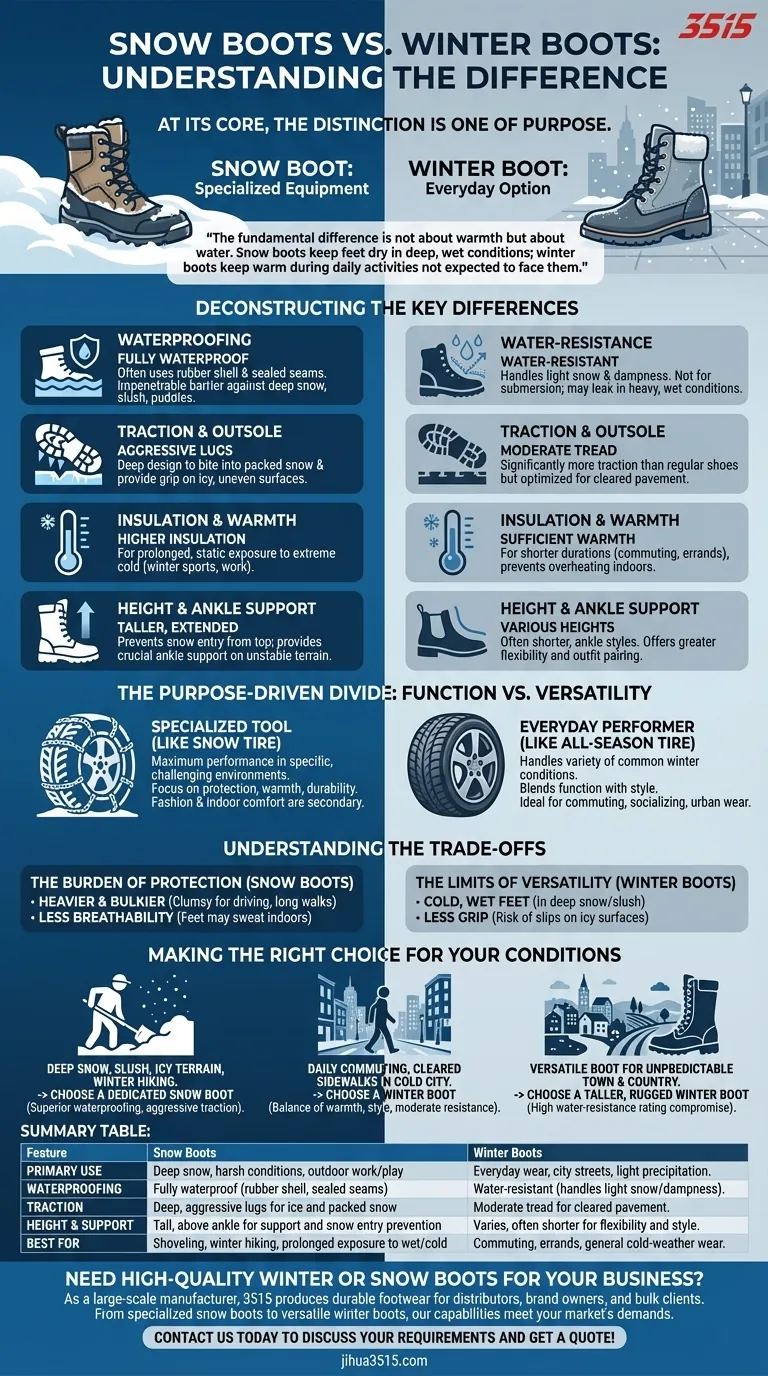
Related Products
- Safety Footwear Wholesale Manufacturer for Custom OEM/ODM Production
- Wholesale Safety Footwear Manufacturer for Bulk & Custom OEM Orders
- Premium Flame-Retardant Waterproof Safety Boots and Shoes
- High Performance Fire-Retardant Waterproof Safety Boots
- Premium Wholesale Waterproof Safety Boots High Performance Protection for Industrial Markets
People Also Ask
- How long can you wear safety boots? The Lifespan is Determined by Wear, Not Time
- What are the differences between steel toe, composite toe, and alloy toe Wellington boots? Choose the Right Safety Toe for Your Job
- What are the cultural perspectives on wearing shoes in the house? A Guide to Home Etiquette & Hygiene
- What cultural and environmental considerations are tied to wearing shoes indoors? Balance Hygiene, Tradition, and Foot Health
- How do safety shoes contribute to cost savings for companies? A Strategic Investment in Risk and Cost Management


